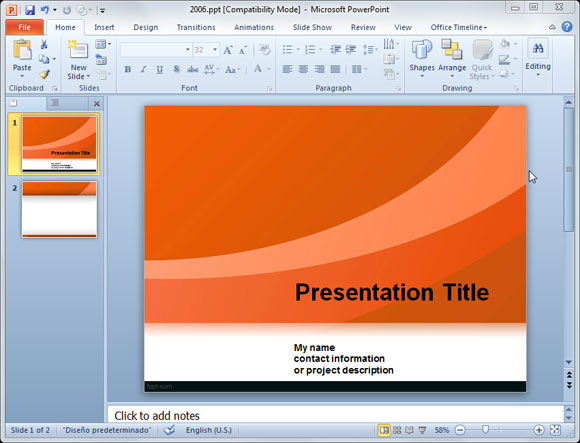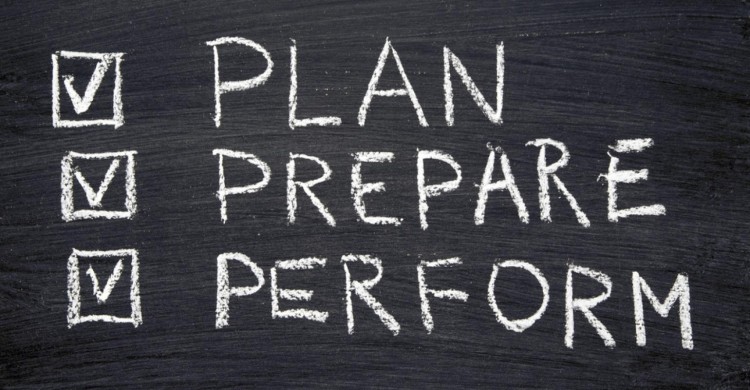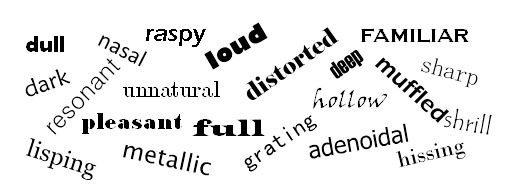How to deliver an impressive presentation (IMPRESSentation)
Have you always found it challenging to present anything to not only your internal clients (your own boss, your boss’s boss, or whoever else’s boss) but also to your external customers be it with the use of a PowerPoint presentation or by plainly speaking in front or by the conference table?
A lot of us, both rank-and-file, middle management, and even top management-level employees, have our own worries, imperfections, and lapses presenting any kind of material to our different audiences.
Even the best training providers, training consultants, corporate trainers, or training practitioners in the Philippines still have areas for improvement communicating impressive presentations that exceed expectations.
From not preparing enough or worse, not preparing at all, failing to engage the listeners, presenting a material that’s not aligned with what the audience expects to sea and hear, coming up with a lousy PowerPoint presentation, and/or sounding too wordy or nonsense, we all have different kinds of challenges we must face when we’re presenting.
Now, the biggest and most interesting questions are:
How do we come up with a presentation that our audience, whoever they may be, will appreciate and get a lot of useful takeaways from?
How do we impress them with our content, both on the visual aids and what we say, and win their hearts and minds?
How do we IMPRESSent a memorable and bottom lines-achieving IMPRESSentation in order to IMPRESS?
Below are what I call ‘The Goods of IMPRESSentation’. There are eleven (11) of them and I’ve decided to just divide this article to two parts. Goods one (1) to six (6) will be discussed in this article and the remaining ones will be covered in Part 2, which will be published on Monday, October 26, 2015.
1. SUBJECT MASTERY
This may already look like a cliché but it’s still a very important and critical aspect of impressing when presenting. No matter how perfect our communication skills and confident we are, if it’s obvious that we don’t possess sway of the topic, not even our excellent pronunciation, accent, grammar, vocabulary and our vaunted self-esteem will save us from any impending embarrassment.
We’re better off researching about the topic we’re gonna talk about even though we’ve been in that kind of job for God knows how long. We have to be completely sure we know the ins and outs of that topic and that whatever clarification or question is thrown at us, we may not need to resort to the ever omnipresent technique of ‘PARKING’.
Part of researching further and deeper into our topic is collecting and organizing data that are both numerical and and literary. There are some people in the audience who are highly analytical. They are not easily contented with words and pictures. They need numbers, for as long as they’re applicable, to justify or back up what we’re talking about. It’s better safe than sorry.
Afterwards, it’s highly recommended that the information we’ve gathered will be arranged into an outline. Having an outline will be very useful for another Good of IMPRESSentation that we’ll talk about later into this article.
2. QUALITY POWERPOINT PRESENTATION
Although very basic, let’s not forget the characteristics that make our presentation impressive. These Essentials of a Winning PowerPoint Presentation will no doubt enhance the other already good aspects of our delivery. They are…
Show consistency
One of the basic yet commonly disregarded essentials is standardizing the slide elements’ position, size and color. While others come up with a more creatively abstract way of making a presentation, a standardized appearance still suits situations where we present to colleagues and superiors in a formal setting.
Make sure that there’s consistency with where the texts and images are positioned and our contents’ chosen font size and color.
A dark background requires a light text color
Very elementary, I know, but we have to make sure we comply with this very basic rule.
Limit the text lines to seven (7) for bulleted enumerations
Some might contend with this guideline. Others might say only five (5) while some others would say there’s really no strict rule. I’d rather lean more on the latter, but I’ll say it depends on the font type and the size. For a font size from 32 to 36, based on experience, we may just limit the text lines to a maximum of seven (7) and not more than that.
Avoid fancy fonts
While I agree it’s based on the presentation’s type and purpose and the audience’s profile (creativity and uniqueness are, for example, preferred in the advertising and marketing industries), this guideline is specific for more formal situations.
Never capitalize all letters
Just like in email etiquette or perhaps, anywhere else, capitalizing words needlessly might send a message that heightened emotions like anger are being communicated. We can only capitalize words to emphasize a word, a sentence, or a thought but definitely not everything on any given slide.
Don’t overwhelm each slide with graphics
Too many or too much of anything is bad or annoying. Make sure that we don’t crowd our slides with too many pictures. They may look too fancy to the point of looking cheap or overdone.
Simplify transitions and animations
The kind of transition or animation we choose should match the nature of our presentation and the audience to whom we’re presenting. If we and our work should be seen as formal or more professional, then let’s just stick to simple transitions and animations.
Use high-resolution and thought or concept-representing images
I admit that finding high-resolution images that represent our concept for each slide can be tough. Unless we’re subscribed to premium high-resolution image sellers online and have lots of money, both in cash, check, or card, we’d have to spend so many minutes finding the best high-resolution picture that’s perfect for what message we want to communicate.
Just be patient.
Don’t read from or speak to your slides
This isn’t just an essential of a winning PowerPoint presentation. This is also a lesson on Subject Mastery and another ‘good’ we’ll discuss on the second part of this article, Stage or Room Generalship. For people to be assured that we know what we’re talking about, let’s avoid reading the contents of our slide word for word or looking at our slides most of the time. If it’s unavoidable, alternate looking at your audience and reading on your slides.
3. SUFFICIENT PREPARATION
Rehearse
Even the most experienced top presenters, professional speakers, or training providers in the Philippines also need genuinely sufficient quality preparation. Two effective ways to prepare for a crucial presentation schedule are practicing with co-workers as the audience or practicing in front of the mirror where you and even your presentation projected on a white wall (white screen, better yet) can be seen clearly.
Either case, you’ll get immediate feedback regarding how you look, how you sound, and whether what you say will meet or exceed your presentation’s goals and your audience’s expectations.
Profile your audience beforehand
One of the vital aspects of sufficient preparation is knowing about our audience before we present to them. This doesn’t just involve knowing their names, positions, job functions, departments, or level of influence in the company. It also includes the following:
- Likes and dislikes
- Preferences and pet peeves
- Attitudinal profile
- Expectations
If the aforementioned details are known prior to presenting, it would be less difficult to demonstrate what will please them.
Manage your nervousness before, during, and even after your presentation
As much as I want to be detailed with this one, different people have different techniques or strategies on how they overcome their own nervousness, worry, or even STAGE FRIGHT.
My personal style is I enhance my ‘already there’ confidence with predicting the success in what I’ll do while also anticipating the probability of any failure. Being realistic helps me adjust right off the bat and proceed to my contingency actions. Also, I simply imagine that the people in front of me are basically human beings as well who just need to listen to what I must say or watch me present regardless what their position, tenure, role, and reputation in the company are.
Next, I condition my body, mind, and spirit by thinking of what or who motivates and inspires me. I then use these motivation and inspiration to enliven myself and provide me with the confidence, courage, and knowledge to accomplish my task of presenting with flying colors.
Really, whatever our personal methods are, the most important thing is we don’t let these nervousness, worries, fears, or what not get in the way of our IMPRESSentation.
Prepare for the unexpected and just play everything by ear
Not everything that we have planned turns out the way we want them. Like what I said, predicting the success of our endeavor also comes with anticipating and gearing up for any potential threat that comes our way. When we’re prepared, whatever it is, we don’t have to worry about getting caught off-guard and ending up helpless or regretting.
Do your pre-work
Whether you do all the following things yourself or you delegate them to somebody else doesn’t really matter. Part of preparing sufficiently, which also gives us more peace of mind, is taking care of matters that could be taken care of even before we present. They are:
- Reserving the room
- Preparing the needed presentation equipment like projector, white screen, and flip chart holder and presentation materials like markers (permanent and whiteboard), eraser, etc ahead of time.
Lastly, just be “IN THE ZONE”
Go figure.
4. PRESENTER’S PACKAGING
Always remember this. What our audience sees is what they think they will get. If we look incompetent, lousy, or ill-prepared (yes, people can be unfairly judgmental), they might be worried our appearance represents the quality of our presentation.
Therefore, be conscious with what we wear, how we talk, how we walk, how we stand, and present ourselves in front. We can always get help from Google and research tips and guidelines on what to wear best and how to wear them.
Keep in mind that 0ur appearance should always match what we claim is the depth and width of our expertise.
5. VOICE QUALITY
Whether we’re a classroom or webinar corporate trainer, professional speaker, team building facilitator, or event host, the quality of our voice amazingly enhances our chance of our material being praised, sold, or simply supported.
We don’t necessarily have to sound like a radio or video DJ (VJ), but we’re better off sounding confident, competent, competitive, passionate, and purposeful too. Below are the components of a quality voice that we have to take note of and practice (together with hydrating and lubricating our vocal chords well with lukewarm water and proper care):
Voice clarity
Sounding clear, relaxed but passionate, and fluent tells our audience that we are so spontaneous we know our subject matter like the back of our hand.
To sound clear, we need to enunciate our words not too fast and not too slow. We need to make sure each word is audible and understandable.
Intonation
There’s a saying that goes, ‘It’s not just what you say, it’s how you say it”. Intonation plays a very important role in how our message is communicated. It’s the up and down or rise and fall of our voice in speech. It’s putting the stress onto a certain word to emphasize it or put a certain emotion into it.
Intonation is also whether to drop or raise our voice at the end of our sentence. When it’s a statement or a declarative sentence, our intonation should fall. When it’s a question (interrogative sentence) or an exclamation (exclamatory sentence), the same relatively rises. Let’s brush up on our grammar and intonation, shall we?
Thus, make sure we apply the right intonation when we speak. It’s a big help.
Pitch
Pitch is the highness or lowness of our voice key. It’s another important element of our voice’s quality because just like in singing, the corresponding pitch represents how our message is perceived. If our pitch is too high, we might be perceived as mad. If it’s too low, we might be seen as bored or uninterested.
Make sure we match the right pitch depending on the intent of our presentation or the emotions behind it.
Inflection
Inflection, technically speaking, is the combination of intonation and pitch. However, much more precisely, it’s putting the right emotions or feelings into our voice when we’re presenting.
What this simply means is it would greatly enhance our speech or presentation when we let our viewers see that if our material is about happiness, we show happiness in how we speak and our facial expressions. It’s as simple as that. The rhythm of our voice, our aura, and disposition should reflect what kinds of emotions or feelings our material promotes.
We don’t want to be told our voice belies our materials, do we?
Pace or Speech Rate
This is another significant component of our voice quality. There are some speakers or presenters who talk too fast without regard of whether their audience can catch up to what they’re saying or not. On the other hand, there are those who speak too slowly that they bore their listeners.
Find out the right speed when we’re speaking. It’s not too fast and not too slow. Our audience will appreciate it as they will have different learning curves. There are some whose style is to digest each information they get while there are some who learn very fast. Thus, it’s safe to go somewhere in between.
Volume
Whether you’re just addressing a small crowd of five to ten people or presenting to hundreds, modulating your voice in a way that you’re heard by everyone, including those at the very back, is critical.
My suggestion is, with or without a microphone, ask everyone if they can hear you very clearly or not. This alone is your solution to how you’re gonna adjust the volume of your voice. The more audible you are to everyone, the better.
6. THOUGHT ORGANIZATION
The sixth ‘GOOD OF IMPRESSENTATION’ that we all need to know talks about how our speech or presentation is structured from start to finish, what topics are discussed first and last, how we’re gonna elaborate on each talking point, and basically, how all of our thoughts are organized in an understandable order.
Remember our discussion on the first aspect of an impressive presentation at the start of this article, Subject Mastery? I mentioned that whether we’re a beginner or experienced, it will help us avoid committing minor to major mistakes if we have an outline with us.
Having an outline guides us on where to start, how to progress from the beginning, and how to finish the whole thing. We don’t have to hold or carry it with us though. When we present, let’s put it somewhere not visible to the audience’s eyes but where you can easily peek into when you want to double check what you ought to discuss next.
It also helps us with our transitioning or ‘segues’. Transitioning is a very helpful skill that every effective presenter, speaker, or trainer needs to be equipped with. When we know the order of our talking points, we can clearly anticipate at which point we need to make use of transitioning phrases. These statements interconnect our thoughts and the different topics or explanations on our slides. Instead of repetitively saying ‘NEXT!’, as what other presenters often say, we can vary how we proceed from one slide to another with different segues.
An outline simply ensures we don’t get lost or we cover what we have to discuss while being conscious about our time so make sure we have one. Unless we have a photographic memory, we will greatly necessitate this.
***
This is the first of two parts of our article, The Goods of IMPRESSentation: Eleven keys to winning hearts and minds with WORDS. Goods seven (7) to eleven (11) will be published on Monday, October 26, 2015. Make sure you watch out for it when it goes online.
—————————————————————————————————————————————–
If you are interested in hiring us to facilitate your in-house or public corporate training on Presentation Skills, just give us a call at (02) 919-2734 or send us your inquiry at info@mssbizsolutions.com









Add Comment